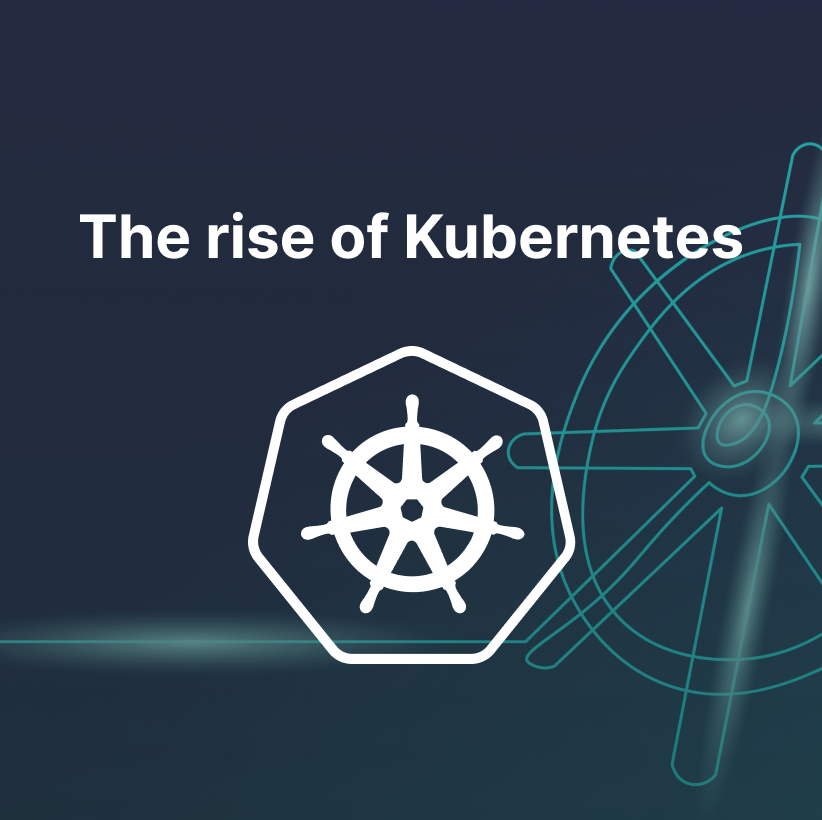You can choose between on-premise or cloud deployment. You can enjoy a system that supports fast delivery and lifecycle management. Maybe those are just some reasons why 96% surveyed in the last Cloud Native Computing Foundation study are either using or evaluating Kubernetes.
Kubernetes is on the crest of a wave and is now a standard for container orchestration—remember that it’s key to divide an application into logical units to smooth management and discovery, and to automate app scaling. And that wave seems to be going up instead of preparing to break against the sand. Two technologies have helped make that happen: cloud and containers.
In this article, we’ll dive deep into today’s state of Kubernetes and what benefits have supported the growth of this open-source orchestration system. Plus, we’re going to travel to the future to check out what’s ahead for Kubernetes.
Kubernetes has now reached that spot of trendiness and is considered mainstream. We can say that it’s more mature and this maturity is prompting companies to adopt it. But it’s not just that.
Although Kubernetes is still complex to perform and recover, for instance, it’s still a best-in-class solution to support stateful applications. Plus, as Docker became the operating system for the cloud, Kubernetes has taken a piece of that cake, too, saving a seat on the table as an enabler to orchestrate and manage all container resources.
Kubernetes drives more strength to infrastructures and also helps them be more scalable. It’s not a Kubernetes vs. Docker conversation but more a how-they-work-together one, as they have the power to improve each other’s potential.
Following the current state of Kubernetes, when digging into what makes it the de-facto standard for container orchestration, we find that it truly takes it to the next level. Kubernetes not only supports container management but also deployment strategy, high availability and scalability, and more.
As an open-source system, it has a community that’s always looking to improve it. The last releases have shown security improvements, for example. This and being the only container management solution that can be used as a service offered by major cloud vendors and all its services, transforms Kubertenes into a really suitable system for production environments.
We’ve talked about its maturity, being on-prem and cloud, the services it provides to the ecosystem, and the great support it gets from the community. All of that creates the foundation of Kubernetes popularity, but they’re not alone.
Kubernetes is being chosen by companies looking forward to migrating to the cloud and it’s even helping IT teams seeking a production-ready product that unlocks strengthened security, visibility, and more.
But why? One key is that Kubernetes is a trusted platform. That trust is based on the large number of companies already using it. Plus, we must remember that Kubernetes was originally born thanks to Google. That’s not the only industry leader that supports it: Microsoft, Red Hat, IBM, and more tech giants have joined the list.
Trust enables other must-do to gain popularity: availability. It has massive support in the market. This support allows for Kubernetes to be offered by many vendors. It competes with many other services but Kubernetes has an ace in the hole: it’s not tied to any vendor. So, the mix of support, trust, and availability help companies choose Kubernetes.
Being open-source also supports its popularity thanks to the community behind every fix. The community ensures that Kubernetes has constant updates that fix common issues and deliver growth to the tools supporting Kubernetes configuration, management, and operation.
Another key to gaining popularity is the support it gives companies that want to migrate to the cloud. While organizations are looking to adopt the cloud and protect data when doing so, Kubernetes arises as a solution to do it gradually. It can also help enterprises adopt hybrid scenarios, ensuring consistency between on-prem and cloud resources is alive all the way.
One last reason for its increased popularity is the support Kubernetes provides for another trend in the tech world: DevOps. As you might know, DevOps is a methodology that takes care of the entire software lifecycle, and, to do so, teams must focus on improved integration, automation, collaboration, and communication.
Long story short: Kubernetes can unlock DevOps. Mainly thanks to its automation and infrastructural capabilities, and the fact that it also solves common DevOps problems faster and more smoothly.
Kubernetes can enable infrastructure and configuration as a code, drive consistency to development, testing, and deployment, and automate time-consuming manual tasks to free teams and let them focus on the more important stuff. Plus, the multi-cloud and scalability capabilities it offers are beneficial too.
The future of Kubernetes has to be analyzed in two ways. The first one is connected with the significant benefits it will deliver to IT teams, such as improving multi-cluster support. Plus, it will boost escalation and lower latency, and we can expect more automation.
Another key to consider is that the multi-cluster support will be enhanced thanks to a new treatment for those clusters; they will be considered as a unified group and managed together. We can add to this technical side that this will improve data-intensive workloads support too.
The other way to look at the bright future of Kubernetes—note that these ways are not exclusive; they will exist together—is the lack of skilled professionals in the market and the fact that organizations will need to embrace tools that provide visibility, reporting, and remediation scripts to help improve security and reduce downtime. So companies that want to make the most of Kubernetes must focus on both conquering the talent and adopting the right tools.
We know that the tech world can sometimes be overwhelming. There’s too much to stay up to date with and embrace. So check out our blog and make your path toward tech improvements easier.
